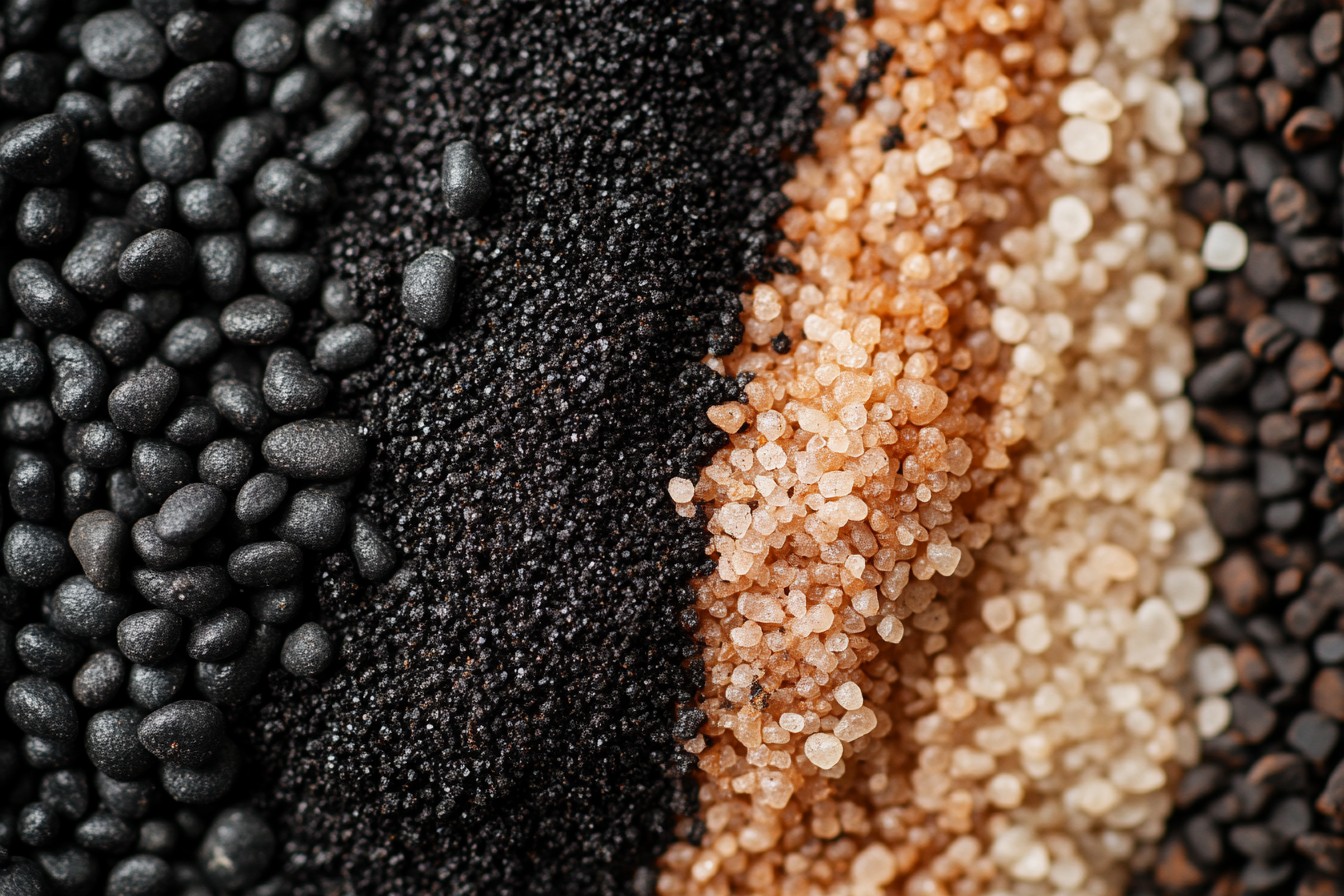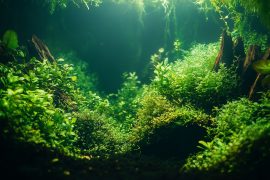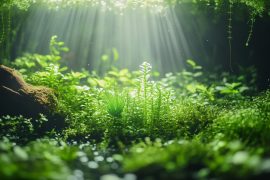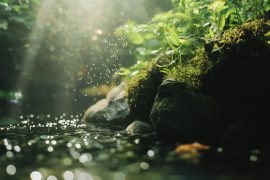The quest for the perfect substrate has haunted me for longer than I care to admit. I’ve spent countless hours—and frankly, an embarrassing amount of money—trying different combinations in search of that magical foundation that makes plants thrive, keeps fish healthy, and looks good doing it. My garage still houses buckets of half-used aquarium gravel that seemed like a good idea at the time.
(My partner has suggested, not entirely jokingly, that these might make an interesting garden path someday. I’m considering it.)
Let me tell you about my first major substrate disaster. I had this beautiful 40-gallon tank set up with expensive imported plants and a carefully selected community of South American tetras.
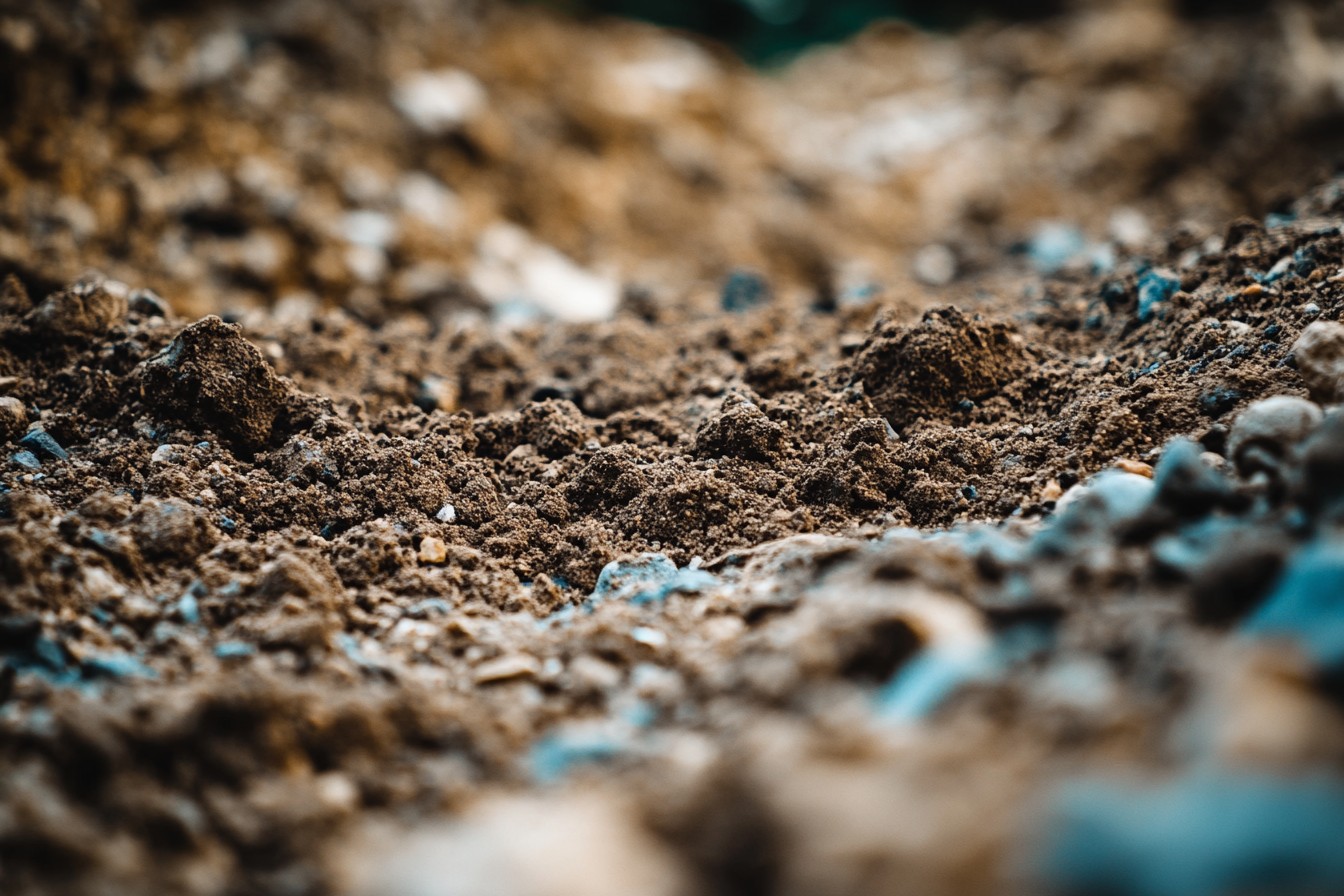
Everything was perfect until I decided that the plain gravel wasn’t cutting it aesthetically. Without properly researching, I bought bags of a nutrient-rich planting substrate and, in my infinite wisdom, decided to swap it out without moving the fish to a temporary home. Two hours and a tank full of chocolate milk later, I was frantically trying to save my fish while cursing my impatience.
Three tetras didn’t make it. I still feel guilty about those little guys. That mistake taught me the hard way that substrate isn’t just about looks—it’s a functional ecosystem component that affects everything from water chemistry to plant growth to the behavior of your bottom-dwelling creatures.
So let’s break down the big three: gravel, sand, and soil. Each has its place, and none is universally “best.” It drives me nuts when I see people in forums declaring one superior without considering the specific needs of different setups. Gravel was my gateway substrate.
It’s what pet stores push on beginners, and there’s a reason for that—it’s nearly foolproof. The larger particles allow water to flow through easily, preventing deadly anaerobic pockets from forming. Beneficial bacteria colonies love all that surface area, and waste generally doesn’t get trapped (though it can fall between the pieces, making thorough gravel vacuuming essential).
I’ve found that a good quality gravel—not those neon-colored atrocities, please—with particles between 2-5mm works best for community tanks. Anything larger creates too many gaps where uneaten food can rot; anything smaller starts approaching the problems of sand. Last year, I set up a tank for a client who insisted on using larger river rocks as substrate.
Looked gorgeous for about two weeks. Then came the algae blooms and the funky smell during water changes. We eventually had to tear it down and restart with proper substrate.
The cleaning crew he’d selected—some otherwise excellent Corydoras catfish—couldn’t navigate between the large rocks to do their job properly. Poor little guys were beating up their barbels trying. Sand, on the other hand, offers a completely different set of opportunities and challenges.
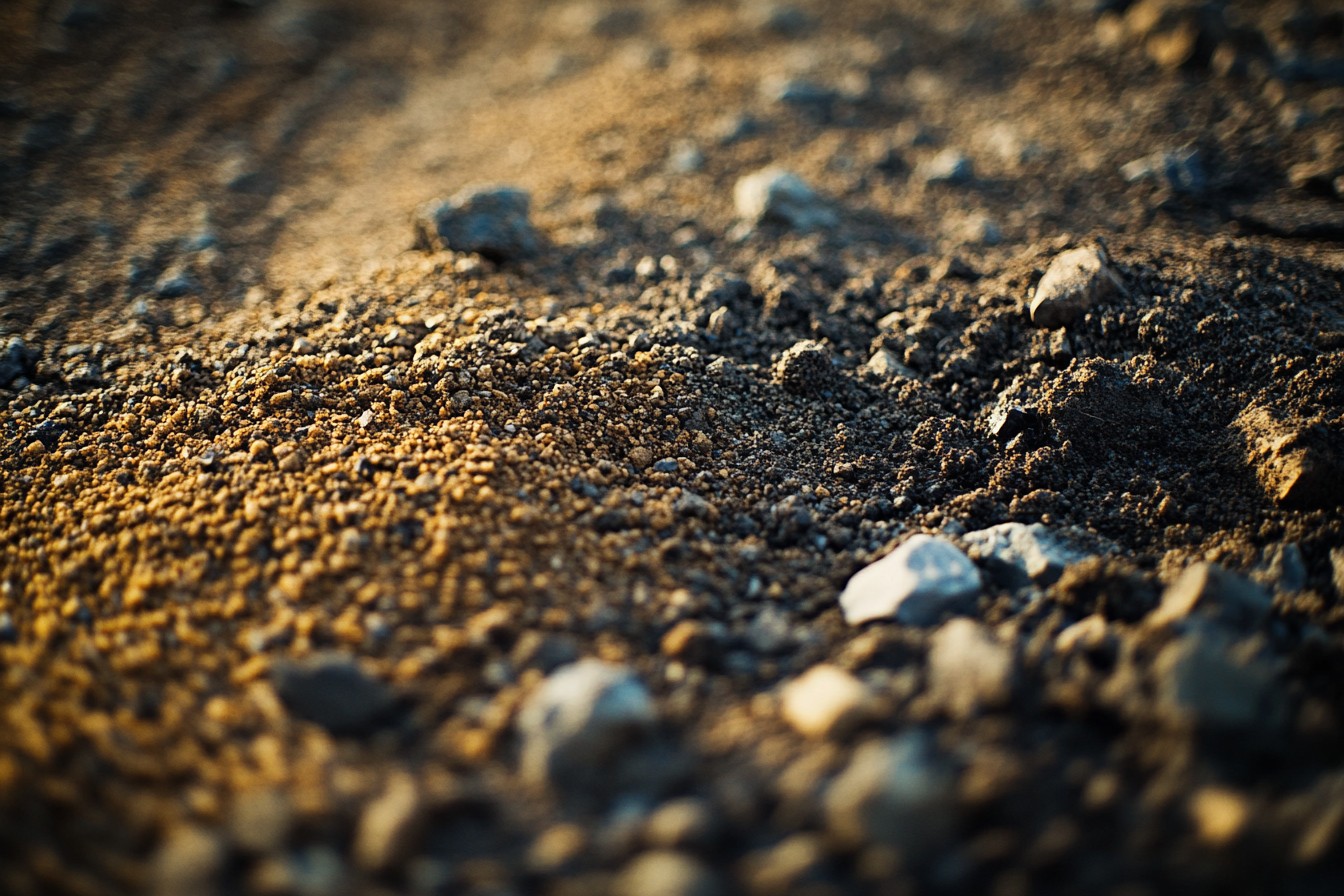
I fell in love with sand substrates after setting up my first cichlid tank. Watching those fish sift through fine sand, creating little pits and moving it around to suit their preferences—it’s like having constantly rearranging underwater landscapers. But sand requires attention.
It compacts easily, which can create those dreaded dead zones where hydrogen sulfide builds up. Nothing ruins a Tuesday quite like the rotten egg smell of sand that’s gone anaerobic during a water change. I learned to gently stir the surface during maintenance and never make it too deep—one inch is plenty in most cases.
The worst sand mistake I ever made involved using play sand from a hardware store without properly washing it first. I spent six hours rinsing that stuff and still ended up with a tank that looked like a dust storm for days. My filter clogged three times before things settled.
Now I stick to aquarium-specific sand that might cost more but saves sanity. One thing I love about sand is how natural it looks for certain biotopes. My South American setup with fine white sand, twisted driftwood, and carefully placed leaf litter looks so authentic that sometimes I catch myself staring at it instead of working.
It’s probably cost me hundreds in lost productivity over the years, but who’s counting? Now, aquarium soil—this is where things get both complicated and magical. Nothing grows plants like a good aquasoil, but I’ve had more than my share of struggles mastering it.
My first experience with aquasoil was disastrous. The packaging said it would lower pH, but I didn’t realize how dramatically. My water went from 7.2 to below 6.0 in two days.
The cherry shrimp I had so carefully acclimated didn’t appreciate the rapid change. Lesson painfully learned: test daily when using a new active substrate, and cycle the tank completely before adding sensitive livestock. These specialized soils aren’t just dirt in a bag—they’re engineered products with specific properties.
They’ll typically leach ammonia initially (great for cycling, terrible for fish), alter water chemistry, and eventually break down over time (usually 1-2 years in my experience). I’ve had tanks where the soil was still going strong after three years and others where it turned to mud in 18 months. The variables are endless.
Cost is another factor that can’t be ignored. A proper layer of quality aquasoil for a standard 55-gallon can easily run $150-200. I once spent nearly $300 substrating a custom 75-gallon planted tank, and my receipt prompted an actual intervention from my friend Trevor.
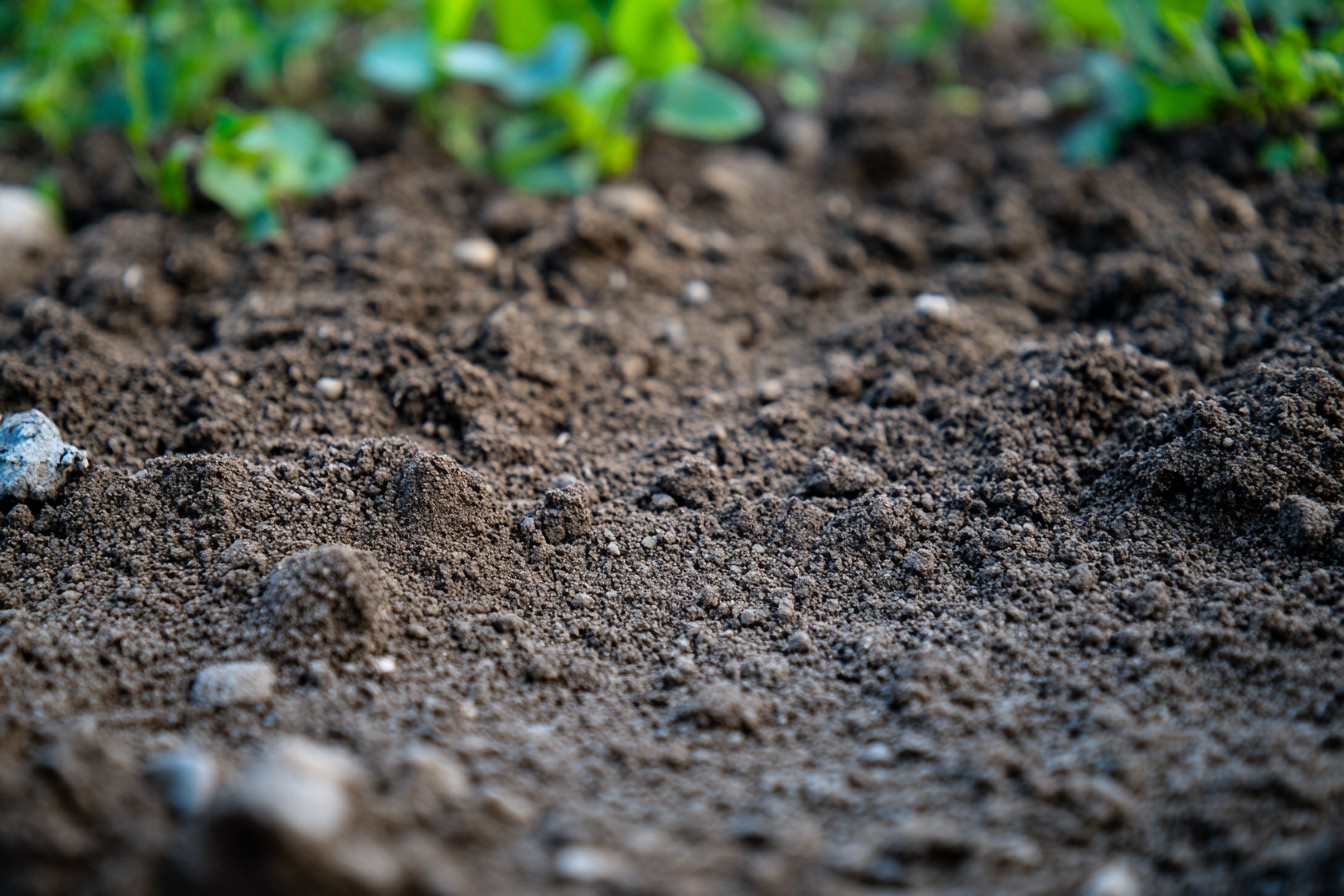
“It’s dirt in a bag,” he said, waving the receipt. “You know that, right?” I explained the nutrient-rich properties and ideal cation exchange capacity, but even I had to admit the price tag was steep. Here’s something they don’t tell you in the glossy aquascaping magazines: you can mix substrates to get the best of all worlds.
Some of my most successful tanks use a base layer of nutrient-rich soil, capped with a fine gravel or coarse sand. You get the growth benefits without the mess, and it’s considerably more economical. I’ve also experimented with dirt tanks—actual organic potting soil capped with sand or gravel.
When done right, they grow plants like nothing else. When done wrong… well, let’s just say I spent an entire weekend with my arms in a tank trying to fix what looked like a mudslide.
My girlfriend walked in, took one look at me—soaking wet, surrounded by buckets, nearly in tears—and slowly backed out of the room without saying a word. We didn’t talk about “the incident” for weeks. The substrate choice also depends heavily on what you’re keeping.
Those adorable panda corys I added to my first planted tank? They destroyed their barbels on the sharp-edged substrate I’d chosen. I felt terrible watching them struggle and eventually had to rehome them to a sand-bottomed tank.
Bottom dwellers like loaches, certain catfish, and most cichlids do better with sand, while many plants prefer the root space provided by coarser materials. Ultimately, there’s no perfect substrate—just the right one for your specific setup. I’ve learned to ask myself a series of questions before choosing: What am I keeping?
What’s my maintenance routine like? How planted will this tank be? What’s the look I’m going for?
And, perhaps most importantly, how much am I willing to spend not just initially, but on potential troubleshooting if things go sideways? After years of trial, error, and countless water changes, I’ve developed a peculiar sixth sense about substrates. I can look at a tank concept and usually guess what will work best.
It’s not exactly a superpower I’d list on a dating profile, but it’s saved me and many clients from making expensive mistakes. So take it from someone who has quite literally watched his money get washed down the drain in pursuit of substrate perfection—there are no shortcuts here. Research thoroughly, start small with new methods, and always, always have a backup plan.
Because in the world of aquarium keeping, the foundation of your underwater world is quite literally the foundation of your success.
